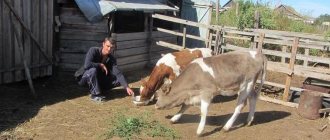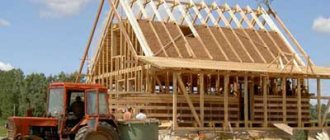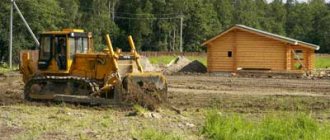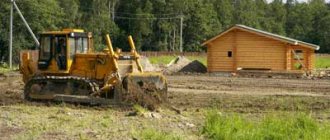Our company's land lawyers will advise you on what can be built on your plot of agricultural land and will change the purpose of the plot. We will carry out all necessary approvals and obtain permission to build on your land plot.
The possibility of construction on agricultural land is regulated by the established type of permitted use of the land, territorial zoning and local land use and development rules. Our company’s specialists will make the necessary changes to the VRI of your site, receive the GPZU and permission to build the capital construction projects you need.
You can familiarize yourself with the classifier of types of permitted use of land located on our website.
Land in the Russian Federation is classified according to various categories. Agricultural land, according to Article 77 of the Land Code of the Russian Federation, is a land plot that is located outside the city and is intended for agricultural activities. Articles 81 and 82 of this code also tell us that an agricultural plot can also be adapted for organizing a personal subsidiary plot. Meat and dairy farms, repair shops for agricultural machinery, warehouses, elevators, and, in specially designated territorial areas, gardening and holiday villages are being built on agricultural land.
What can be built on agricultural land with VRI agricultural production?
On agricultural plots that have the type of permitted use for agricultural production, it is possible to build facilities necessary for such activities. Such real estate objects include:
- industrial buildings;
- utility buildings;
- facilities for temporary stay of people;
- buildings for servicing the enterprise;
- catering points;
- hydraulic structures;
- greenhouses, garages and other buildings.
The construction of such facilities is carried out with a number of restrictions.
- Thus, industrial buildings should be used for the production of agricultural products.
- Outbuildings include various hangars, warehouses and storage facilities (grain or other products). Such buildings are necessary for the normal implementation of agricultural activities.
- If you are building a garage, it should be used for equipment used in agricultural work.
- Facilities for the temporary stay of people are real estate where agricultural workers will rest.
- Only agricultural products can be grown in greenhouses.
In addition, the construction of other facilities that ensure the normal operation of the agricultural enterprise is permitted. These include hunting houses, barns, vegetable storage facilities, beekeepers' houses, equipment repair shops and other buildings. To the same list you can add objects that provide scientific or educational activities and are intended for keeping animals.
It is important to consider that before constructing any of the capital projects listed above, you must obtain permission. Without such a document, you can build sheds, cabins, auxiliary outbuildings and other similar real estate. You should also be guided by the building density and requirements for the maximum characteristics of buildings (height, number of storeys, etc.). Our company’s lawyers will help you understand the peculiarities of construction on agricultural land.
Types of agricultural plots
As a general rule, agricultural land has the following characteristics:
- located outside populated areas: around populated areas at a distance of 30 km, all land can only be agricultural. The location of new industrial facilities in close proximity to residential areas is excluded;
- intended for farming: livestock farming, fish farming and crop production;
- can be used for processing agricultural products and for the development of science in this area;
- in some cases, it is possible to use land for hunting purposes: hunting itself and production associated with processing the results of this activity.
The cadastral passport of the site provides information on how the land can be used. Activities:
- subsidiary (personal) farming;
- farmland;
- land for peasant farming;
- gardens and dachas.
The type of activity planned on the site is always specified:
- growing plants for personal use (flowers, vegetables, fruits);
- arable land, growing crops on an industrial scale (cereals, sunflowers, grapes, etc.);
- haymaking;
- agricultural production;
- pastures;
- running a personal household with the possibility of permanent residence on the territory.
Each activity determines possible buildings and their purpose.
The need for a territory planning project for construction on agricultural land
The territory planning project is an urban planning document that has something in common with the land surveying project. The draft plan contains more detailed information about the characteristics of real estate objects. It also indicates the location zones of the planned buildings.
Based on the project, the division of agricultural land, as well as the construction of certain facilities, is allowed.
- By law, a territory planning project is required when constructing structures in a horticultural non-profit association, dacha and vegetable gardening partnership.
- A planning project will also be required in the case where the owner or tenant of the site plans to build a large building or a number of structures that will change the elements of the planning structure.
- This document is applied when the development and development of territories related to DNP and SNT takes place.
Project preparation is carried out when it is necessary to establish the boundaries of public lands, the planned location of capital facilities and determine the parameters for the development of the territory. It contains drawings that indicate red lines, boundaries of existing planning elements and other information. The project also includes provisions on the characteristics of the structure, the sequence of design stages and other information. Such a document is of great importance, which is why it is so important to correctly determine the need to obtain it.
Project development is carried out by design organizations. The local government authority initiates the procedure. When all the papers are prepared, they are sent to public hearings. This is a multi-step and complex process. Our company’s lawyers will determine the need for a territory planning project in each specific case. We will study the parameters of construction on agricultural land and issue an informed conclusion. To schedule a consultation, call or email us online.
How to build a residential building on agricultural land?
Before building a residential building, you must obtain permission from the local municipality. But such a document will not be issued if the object is located on lands for agricultural production. Moreover, if you build a house without permission, you will be required to demolish it at your own expense.
To install a residential building on agricultural territory related to agricultural production, you will have to change the type of use. You can obtain a building permit if you transfer part of the plot of land to private housing construction land, joining it to a populated area. This option is considered if there is a populated area nearby. However, this procedure is quite complicated. It is necessary to obtain a resolution to make appropriate changes to the urban planning plan. Otherwise, the procedure for changing the VRI is standard.
- You must submit an application to the local municipality, attaching documents for the site and the applicant.
- A special commission is then created to hold a hearing and review the application. If changing the VRI is appropriate, the procedure will be satisfied.
- Hearings are held publicly and interested parties are involved. Based on the results, a decision is made, which will be published in local media.
- Then the head of administration takes over the review. He takes into account the recommendations of the commission.
- If the change in the VRI is approved, you need to register the new status of the site, apply for a building permit and begin construction.
The type of use will be changed if this action has a positive impact on the situation in a given locality or area. But even a small mistake when filling out the papers, or the lack of sufficient justification for changing the VRI will lead to a refusal. Reapplying is possible, but it will take time and money. The best option is to enlist the support of a land expert. Our company’s lawyers will tell you how to build a house on agricultural land in your situation.
Categories of land and types of permitted use in the 2021 table
Agricultural land plots are all land that can be transferred to both legal entities and individuals for the following purposes:
- development, cultivation and processing of agricultural products;
- creation of infrastructure for the full cycle of agricultural production;
- conducting research activities for scientific and educational purposes.
Lands and allotments include the following categories of land:
- arable land;
- land for mowing and haymaking;
- pasture;
- forest belt, with the exception of the forest fund;
- allotment occupied by courtyards and outbuildings;
- land under perennial plantings.
It should be noted that land suitable for this purpose is allocated for agriculture. And for industrial facilities and other purposes, less valuable and fertile lands are allocated, not intended for agricultural work.
All lands are divided into categories of permitted use. We present the information in table form.
| Land categories | Composition of permitted use |
| Suitable for farming | All land plots located outside the boundaries of settlements |
| For agricultural production | Plots for arable land, grazing, haymaking, as well as land for perennial crops and vineyards |
| Private household plot (personal subsidiary plot) | Allotments related to household plots and field plots |
| Gardening and horticulture | Provided to individuals for planting and growing fruit trees, berry plants, as well as vegetables and melons |
| Country house management | Lost force at the beginning of 2021. |
| Land for haymaking, pastures, livestock | Agricultural plots for the purposes of grazing livestock, stockpiling feed, raising animals |
| Organization and management of peasant farming | Land is allocated for already registered legal entities listed as peasant or farm enterprises |
| Land under various agricultural buildings | Allotments with buildings located on them, which are necessary for the production cycle and storage of products grown and collected from the fields |
| Lands for objects of other purposes, not related to agriculture | Areas that are of less fertile quality, suitable for industrial construction, laying highways and pipelines |
| Protective forest belts | Land is used for planting trees |
| Other agricultural lands | Areas used for teaching and research activities |
Also read: VRI classifier of a land plot, compiled in a table and with all changes in 2021.
How to build a warehouse on agricultural land?
If the land is intended for agricultural production, the law allows the construction of warehouses on it. But such structures should be used to support the activities of the agricultural enterprise. Before constructing a warehouse, permission must be obtained. To complete it you will need:
- confirmation of rights to the site where the warehouse will be built;
- design documentation, including diagrams, sketches and other papers;
- results of project approval in various authorities;
- economic feasibility of construction (calculations are attached);
- urban planning plan, site planning organization diagram.
Each document must be carefully checked for compliance with legal requirements. These papers, along with the application, are sent to the district administration. Here they will study the feasibility of construction, review all documents and make a decision.
Before submitting an application, approval of future construction may be required from various authorities. Among them are environmental inspection, land management, public utilities and other organizations. It is important that sanitary and environmental standards are observed. The warehouse exceeds the permissible dimensions or other parameters - deviations from such characteristics will have to be agreed upon. Therefore, the preparatory stage is decisive when obtaining permission.
If the administration has approved future construction, you can proceed to the construction of a warehouse. When the facility is ready, it must be put into operation and undergo new approvals. The slightest mistake at any stage will lead to refusal. Particular attention should be paid to the project and obtaining approvals from various authorities.
To avoid any difficulties when building a warehouse on an agricultural plot, contact land lawyers for help. Our experts will take care of the approvals and obtaining permission - you just need to sign a power of attorney to represent your interests. We will go through all the stages quickly and with a guarantee of results.
What is required to build the facility?
To begin construction work, it is necessary to draw up a number of documents to permit the use of the land plot for summer cottage construction. First you need to prepare a package of papers:
- application requesting permission to erect a building;
- cadastral plan of the land plot;
- passport or alternative document to confirm identity;
- confirmation of ownership of the site;
- diagram of the future building.
Before starting construction, you need to collect many documents, including a plan of the building itself
Is it possible to build a store on agricultural land?
The construction of real estate on agricultural land is permitted if such objects correspond to the intended purpose of the site. You have to consider the type of permitted use when it comes to building a store. On various agricultural lands, it is possible to build cultural and community buildings, production buildings, warehouses and storage facilities. At the same time, it is important to comply with the requirements of urban planning regulations and other regulations.
If such requirements are met and the site is classified as agricultural production, the construction of a store is permitted. But it must match:
- environmental regulations;
- fire regulations;
- sanitary and hygienic standards;
- construction requirements.
The territory has a type of permitted use that is different from agricultural production - the VRI will have to be changed before constructing a store. Otherwise, the owner will be required to dismantle the building at his own expense. In the most serious situations, the land may be confiscated from the owner.
To build a store, you will have to obtain permission from the local administration. To do this, you need to prepare a project, collect documents for the site and justify the need for construction work. It is necessary to coordinate with various authorities, including fire services, utilities and others. They confirm that the property complies with the law and will not harm the environment.
Other features that influence the issuance of a permit should also be taken into account. Thus, the future store must comply with the maximum permissible characteristics of buildings in a particular area. Height, number of storeys and other parameters are of great importance. Building density and other indicators will also be taken into account. All this must be checked before construction begins and before applying for permission from the municipality.
Our company's land lawyers will check the category and type of use of your site, find out the maximum development parameters and determine whether it is possible to build a store. If the land is not suitable for construction, we will change the VRI and carry out the necessary approvals.
Legislation in the field of agricultural land
Legally, the rules for the use of such lands are established by the following acts:
- Land Code: Articles 77-80 (Chapter 14);
- Federal Law “On the turnover of agricultural land;
- some articles of the Civil Code;
- regional legislative acts.
Agriculture on the territory of the Russian Federation is carried out with varying intensity: for some regions it is practically the only source of revenue to the treasury. In other subjects, agricultural activities are limited to only certain types and are not the main one. Therefore, regional laws regarding land vary.
The law determines the composition of agricultural land (Article 77):
- fields;
- forest plantings that protect land from destructive factors (wind);
- water spaces (ponds providing irrigation, areas for growing fish, water towers, structures for storing water);
- territories for communications: electricity, water supply and road network;
- buildings supporting agricultural activities.
How to challenge a refusal of a building permit on agricultural land?
When challenging a refusal, one should be guided by the grounds specified in this decision. It is also necessary to take into account the requirements of laws and other legal regulations. You can challenge the refusal of authorized bodies at the pre-trial stage and in court. But before that you need to check:
- that you have submitted a complete list of documents;
- all approvals have been completed, approvals have been received from various authorities;
- there is a possibility of construction on a specific site;
- the property corresponds to the type of use of the plot.
In this case, the refusal was issued illegally and violates the rights of the applicant. This means that it is necessary to submit an application to recognize the negative decision as unlawful to the body that gave such an answer. If the claim is rejected, you will have to prepare for litigation in court.
At this stage, it is important to prove that the refusal was issued in violation of the laws, or the grounds specified in it are not true. It is necessary to provide evidence that construction on the selected site is possible. At the same time, the applicant made attempts required by law to resolve the dispute. For a claim to be accepted for consideration, you must:
- Correctly identify the defendant - the body that refused to issue a construction permit;
- Draw up a statement of claim legally correctly - pay special attention to the motivation part;
- Choose a court to consider the claim - a court of general jurisdiction (for individuals) or an arbitration court (for organizations and individual entrepreneurs).
The content of the claim depends on the grounds given in the refusal. It must contain references to the law, describe the situation in detail, and refer to pre-trial activities. Here they study in detail the reasons for the refusal, proving their inconsistency.
If everything is done correctly, the judge will make a positive decision. You must apply for a permit with him. In addition to the court ruling, a previously submitted list of documents and an application will be required. To ensure that a construction permit is accurately issued after a challenge, contact our lawyers for help.
Fine for misuse of land
For the category of agricultural land, the legislation limits the permitted use and, in case of violation, provides for punishment under the Code of Administrative Offenses. Thus, if the owner violates the intended use, then a fine is imposed on him:
- for individuals - 0.5-1%, not exceeding 10 thousand rubles;
- for officials - 1-1.5%, not more than 20 thousand rubles;
- for legal entities - 1.5-2%, not exceeding 100 thousand rubles.
When harming the environment as a result of misuse of land, the actions of the perpetrator are considered aggravated, and the maximum fine is applied.











